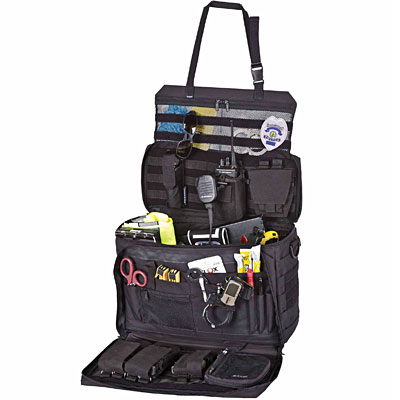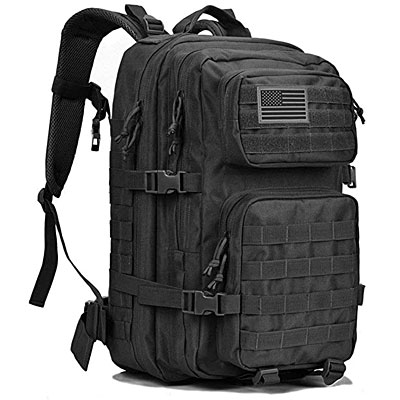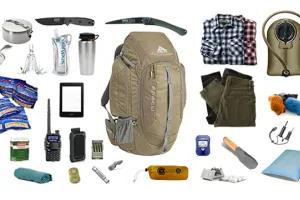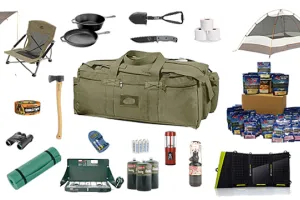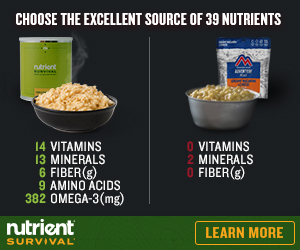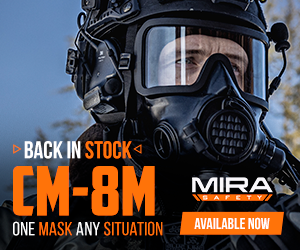
Get Home Bag
Duration: 24 Hours
Use:
Away From Home Emergencies: Storms, Tornado, Power Outage, Flood, Biological, Radiological, Chemical, or Terrorist Incidents
Must Have Gear:
Water, Food, Clothing, Lighting, Fire Making, Weather Protection, Visibility Gear, Games or Distractions, Maps, Sleeping Kit
What is a Get Home Bag?
A Get Home Bag is an emergency bag meant to protect you when away from home. Think of it as a 24-Hour Bug Out Bag.
However unlike a larger Bug Out Bag, a Get Home Bag is meant to be ultra-portable and compact and help you be prepared for shorter duration emergencies.
At a minimum it should help provide you with water, snacks, a change of clothing and a first aid kit. You should have items that would make it more comfortable to sleep if you wind up on a floor somewhere for a night or two.
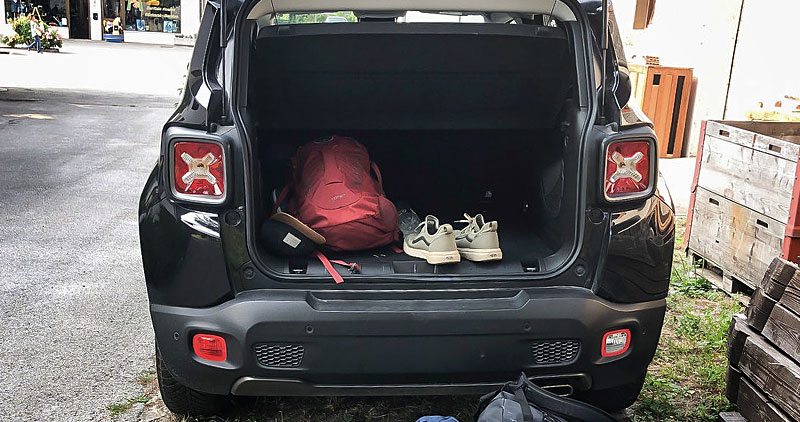
We think of prepping a Get Home Bag as an emergency bag for your car or truck.
Some people keep one at their job. If you are a bus or train commuter then this might an option if you also have your own desk or locker at work.
Don't go overboard! It is easy to get carried away and try to make a Get Home Bag a full-blown Bug Out Bag. Avoid this temptation if possible. You want your GHB to be lightweight and low drag, so you can stay maneuverable on foot.
What Should A Get Home Bag Do?
The name gives you an idea, it is supposed to help get you back to your home, back to your family should you suddenly find yourself in a situation that makes return home difficult.
Here's some examples of events like these: a large scale terrorist attack (ie. 9-11) or giant solar flare with large Electro Magnetic Pulse, knocking out power for hundreds of miles around.
A biological or chemical attack, a train carrying toxic chemicals, and explosion at a nearby plant; all of these could cause sudden area wide evacuation events.
In both scenarios the only transportation that available to people will be their feet. So getting back to the bag weight, make sure not to exceed 30 lbs if possible, and practice hiking with it a few times to see how it feels and how your body reacts.
They are not typically meant to be a deep woods survival kit (unless that is what you would need it to be in order to get home.)
Two Better Than One?
Over time, our thinking about Get Home Bags has changed, and the way we do ours now is a two bag setup.
The first kit is a full time car kit, which carries items in it that we might need from day-to-day, and that aren't affected by the heat and cold: saws, knives, lights, tarps, shelter, pens, clothing, etc.
We prefer using bags like the 5.11 Wingman Patrol Bag for this kit: it's easy to keep organized since it tons of pockets.
FYI If you buy anything with the links we provide on this page we might get a small percentage of the sale from Amazons end. For more info click here.
Wingman Patrol Bag
Typical Price: $100 Size: Large - 39 Liter
Pros: The Wingman is designed to ride in the the passenger seat with the upper panel fastened around the headrest, serving as an organizer, tool kit, and tactical bag.
Featuring dual-fold open web platforms, a foldout organizer panel, adjustable main compartment divider, mesh pockets, and almost limitless storage options, the Wingman Patrol Bag will keep your gear stable, secure, and within easy reach.
Cons: Easy to load up with heavy gear, harder to carry long term should you have to ditch your vehicle.
Our second bag is a backpack - and this we take in and out of the car with us and don't bring along unless we are going several miles away from home.
This bag carries: medical supplies, backup lithium batteries, food and water - since these items can be impacted by excessive heat or freezing.
Get Home Bag Contents:
Clothing:
- A pair of socks, pants, shirt, and underwear in a compression sack
- Extra pair of prescription glasses and/or sunglasses
Sleep Kit:
Food & Water:
Hygiene & First Aid:
- Purell Instant Hand Sanitizer
- Badger SPF 35 Sunscreen
- Lava Heavy Duty Hand Cleaner
- Toothbrush, toothpaste, deodorant
- Coleman Biowipes and Camper's Toilet Paper
- First Aid Kit
Tools:
- Petzl Tikka+ Headlamp
- Morakniv Companion Fixed Blade Knife
- 100 Feet of 550 Paracord
- High Visibility Reflective Vest
- Cyalume Light Sticks
- Map(s) of local area
- Work Gloves
Emergency Communications:
Shelter & Weather Protection:
Upgrades / Additions:
- ESEE Izula Knife
- Pandemic Kit
- AMK SOL Emergency Bivvy
- UST SplashFlash LED Light
- Boonie Hat
- Baofeng UV5RA Two Way Radio
- USB Smart Charger Cable for BaoFeng
The Best Get Home Bag Backpacks
Here is a list of the bags we think are the best types to make a Get Home Bag with. If you already have something at home, great, use that. Just make sure it is sturdy though, and not going to fall apart on you when you need it most!
Reebow Gear Military Tactical Backpack
Typical Price: $40 Size: Large - 40 Liter
A killer bag for a great price. Similar design to the Maxpedition Falcon II but larger capacity and 1/4 of the price. All the features you would want in a bag without breaking the bank considering that it will likely spend most of its life sitting in a vehicle anyway.
High Sierra Loop Backpack
Typical Price: $26 Size: Small - 29 Liter
Specs: The best bang for your buck. Tons of space, well designed, low-profile. A huge variety of colors available. It has all the functions some of the high-end packs have for a tenth of the price.
Our first choice for beginner Bug Out Bag Builders. Definitely a contender for your kids bags. 13.5"(L) x 19"(H) x 8.5"(W) at 1.4 lbs.
5.11 COVRT18 Backpack
Typical Price: $130 Size: Small - 30 Liter
Pros: High quality low-key OPSEC sensitive pack, which is a fancy way of saying it looks like a plain old backpack. We've been abusing ours for year, and love it - we use it daily, see our 5.11 COVRT18 review here.
ons of organized storage helps you know where your stuff is at all times. Padded laptop sleeve, hydration pocket, padded handle, CCW compatible. Comfortable padded straps for long-term wear. 500d nylon is durable and water resistant. 12.5"(L) x 19"(H) x 7.5"(W) at 3 lbs.
Cons: The elastic water bottle cinch straps on the sides tend to break over time. Not a deal breaker but be aware.
Packing Your Get Home Bag
Organize a GHB as you would any other emergency bag.
It is best to keep things compartmentalized by use, so if you can pack things into clear seal-able bags or into pouches with labels on them then do so. For example, put all your fire making items, matches, lighters, etc. into one bag so if you need it you can grab it all out at once.
This also serves a dual purpose, you are adding water repelling protection to the contents inside the bag should your bag leak in a downpour.
Make the first aid kit easily accessible. It's the item you will need the most often, especially for boo-boo stuff.



